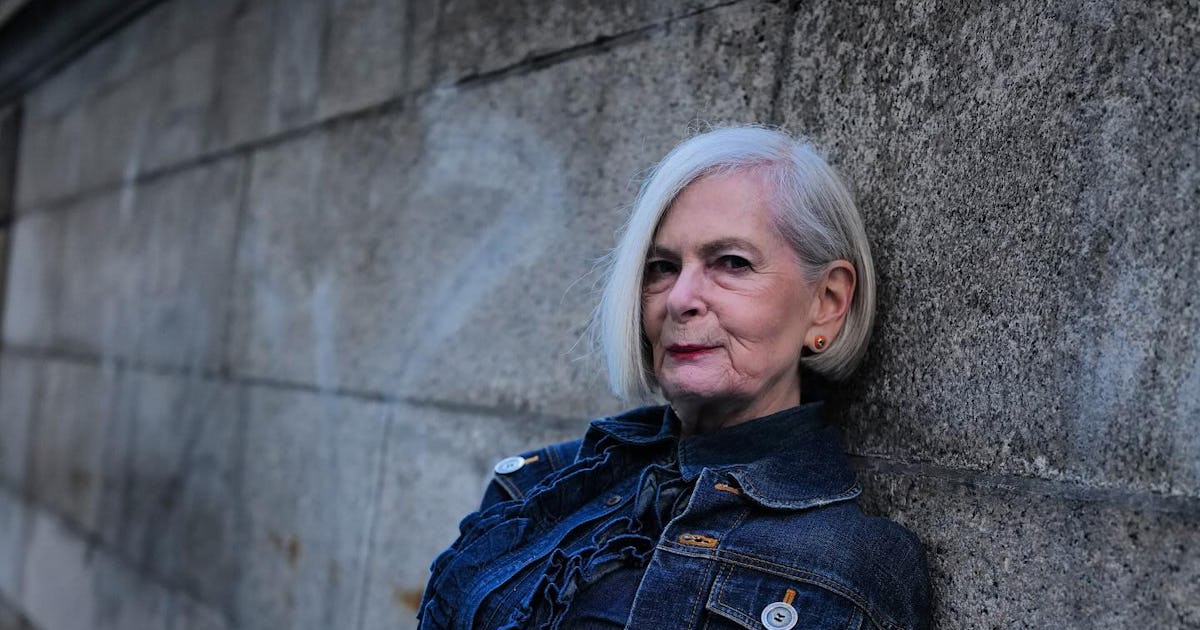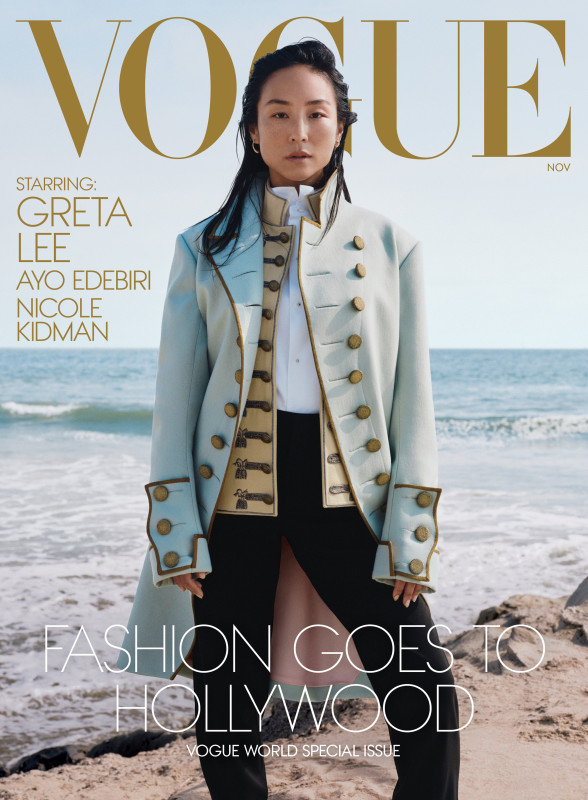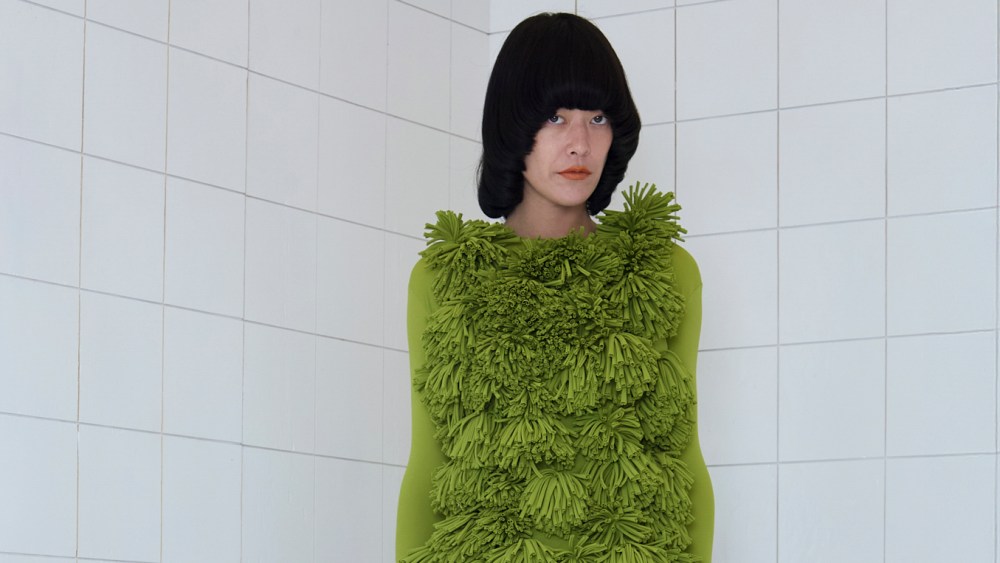
In the wake of releasing her first book, How to Be Old, Lyn Slater is already revving up for another new chapter.
“Because [I turned] 72 in June, I’m reinventing myself again,” says the author and content creator, aka the “Accidental Icon,” over Zoom. “It never ends, my dear.”
Slater found fame in her 60s through a perfect storm of events. While taking classes at FIT, she launched her “Accidental Icon” blog and Instagram in 2014, showcasing her intellectual, avant-garde style; signature sunglasses (that weren’t an accessory to evoke mysteriousness but to aid her shyness in front of the camera); and impeccable eye for Commes des Garçons and Issey Miyake collectibles. Slater, outfitted in a Yohji Yamamoto suit, went viral after street style photographers mistook her for an established fashion luminary during New York Fashion Week. She quickly skyrocketed to fame as an international model and prolific influencer, while empowering women of all generations to reframe their views on aging and the outdated (and misogynistic) concept of dressing for one’s age.
“Most of my followers were young,” she says. “Many of them said, ‘You’re making me not afraid to be old. You’re making me realize I don’t have to do everything by the time I’m 30.’”
But after a few intense years of brand collaborations, campaigns, fashion editorials, and frenetic global travel, she felt like she lost control of career, persona, and narrative. “Once the influence-ing happened, I was put in a category of ‘Insta-grandma,’ simply because I had gray hair,” she says. “It takes away all your identity.”
As she describes in her evocative prose in her book, Slater became burnt out — creatively, emotionally, and physically — from the constant churn of mandated content. With her Manhattan apartment crammed with racks of designer samples and swag, Slater also felt so far removed from her sustainability ethos and her early support and excitement in creating relationships with like-minded independent designers.
When the world shut down in 2020, Slater and her longtime partner moved to Upstate New York to recalibrate. She redirected her creativity into reviving their early 1900s house and garden, caring for her grandchildren, and writing her bestseller. Slater’s relationship with fashion changed, too.
“My attention has turned,” she posted on Instagram in May 2024, two months after How to Be Old hit bookshelves. “I don’t care about fashion as before.”
But recently, Slater reinvigorated her interest in self-exploration and expression through wardrobe — after realizing that we’re in need of her reassuring, encouraging, and ultimately inspiring efforts once again.
“What has happened, unfortunately, is that we have gone way back in terms of allowing real representations of real older women into the media,” says Slater. “Because now we have representations of older women looking ‘young.’”
A self-proclaimed rebel by nature, Slater rails against the impossible standards pushed by social media for women in their 50s and beyond to continually look decades younger. The expectations are unrealistic for most people due to expensive aesthetic procedures and a lie, thanks to PhotoShop and filters.
“There needs to be real stories about the realities of older life that can give younger people a roadmap,” says Slater, who’s starting another revolution through her Substack, “Dispatches From the Shed,” named for her cozy ideating spot in her upstate home.
“My clothing has always conveyed who I am at any particular time of life, and I am very excited now because I’m about to begin a new project, which is this writing [on Substack] and representing through pictures, again, this older part of life,” she explains. “I’ve had a lot of fun thinking about what the wardrobe is going to be.”
Slater holds a pragmatic but optimistic outlook on adjusting her personal style as she confronts the physical aspects of getting older. “There are certain accommodations that you have to make,” she says. “Rather than think of them as losses, you think ‘What can I substitute that can give me the same feeling, the same joy, the same passion?’”
For instance, having bunions means pointy-toe heels are no longer an option. But “that does not mean that you can’t find beautiful shoes,” says Slater, happily pivoting. Her tight “capsule wardrobe” of comfortable yet “very cool looking” footwear wardrobe includes Birkenstock sandals, Hoka sneakers, and a few sustainably produced and ergonomically-cool styles from Finnish brand VIBEa. “They’re very avant-garde-looking, if you pair them with the right outfit,” she adds.
Immersed in nature upstate, Slater has grown her commitment to sustainability and reuse through her style. Shedding her influencer identity to explore her next stage, Slater purged most of her designer swag from the influencer days but maintains her “core collection” of treasured Yohji Yamamoto, Issey Miyake, and Commes des Garçons. Recycling and restyling her decades-old pieces with newly acquired vintage has also sparked fresh enthusiasm — and completely new looks packed with meaning.
“Because you have [more] experience and knowledge, you’re going to do something to that piece — whether it’s an accessory or pairing it with something different — that you never would have thought of when you first wore it,” explains Slater, looking at ease in a vintage flea market denim shirt, with an eye-catching abstract-print scarf from Spanish label Colores de Otoño draped around her shoulder.
As she also shared on Substack, Slater has found herself revisiting memories of life, and her style, in the ’70s — but through a 2025 perspective. On a recent jaunt to a Connecticut flea market, Slater came across a vendor selling long Indian block-print dresses, the same ones she wore in the free-spirited era. “It was very serendipitous,” she says.
Slater revels in the nostalgia of the dress, but has new appreciation for the dress redux that actually encompasses her whole self today, five decades later.
“It’s so light. It’s almost sheer, which I like, because it can give a little suggestion without showing your entire body, which feels very sensuous to me,” says Slater. “I pair it with some very cool VIBEa sandals, and, with my long hair and the dress, I feel that I am both 71 and 21 at the same time.”
Slater’s new-slash-old dress also encourages the already adventurous dresser to venture out of her comfort zone. “I didn’t wear a lot of dresses as the ‘Accidental Icon,’” says Slater. “But for some reason, because of nature, I’m feeling very earth-mother-ish.”
Also reflecting her flora and fauna surroundings upstate, and active outdoor lifestyle, Slater has understandably stacked her wardrobe with denim — but obviously not standard department-store bought jeans, nor does she wear it in expected ways. (See: Slater, in a floral-printed silk pajama top, partially tucked into a pair of ultra-weathered and cuffed worker jeans with gardening clogs, in the epilogue of How to Be Old.)
Over the years, Slater has amassed an impressive vintage denim collection, filled with her own prized pieces she’s owned for decades, flea market picks, and collected gems from online Japanese vintage designer dealers, like Playful.
“I have both a denim dress and a coat, which are Yohji, and look really beautiful with my black and white [palette],” she says. “Of course, I always like to add those little flairs that make [the denim] something different.”
Slater also scours The RealReal for “unique” denim, like a long textured coat by Greg Lauren. “I [consigned] a lot of my clothes to The RealReal for credit, so I have a shopping platform where I’m not buying anything new,” she says. “That goes with the whole sustainability [effort].”
While Slater took a long hiatus from posting fashion content on her own Instagram, she’s kept up her constant search for emerging designers around the world. Indie labels, like Uma Wang, Sofie D’Hoore, Vonsono, John Alexander Skelton, Ya Yi Studio and Act Nº1 have provided much denim inspo — and energized her interest in learning and honing yet another skill: sewing.
“I’m on the hunt for very unique pieces, and there are limitations in how designers are using denim,” explains Slater, envisioning a still-abstract concept of combining existing and found elements. “It’s like adding a layer and saying ‘What can I do with this in a really different way than how people usually wear it?’”
Slater’s “reinvention” actually sounds like an ongoing series of renewals — all leading back to her crucial objective to reframe aging once again. This time, Slater will have full control of her narrative through her introspective and always-evolving writing and style. For an honest message, she’ll even be taking her own photos, previously the role of her photographer partner and professionals from her influencer days.
“It’s going to show the reality of what it’s like to be older, without photoshopping [and filters]. But it will also show that if you apply creativity to it — instead of denying it or trying to be someone else, i.e. ‘young’ — that there is a particular kind of beauty, wonder, and inspiration,” says Slater. “That if you let yourself come closer to women who are 70, 80 and 90, it would make you so less afraid of being old.”
#Content #Creator #Lyn #Slater #Reinventing #Wardrobe






